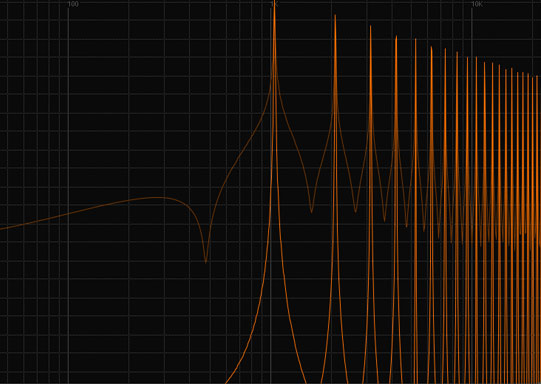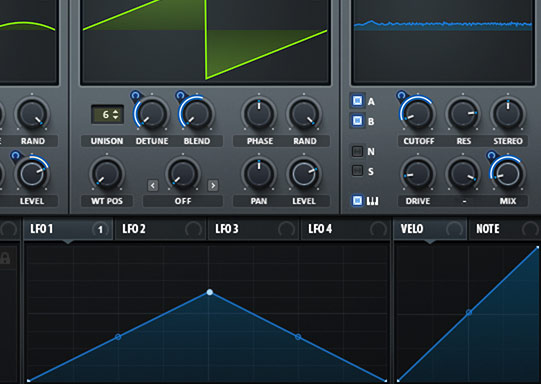
Serum Wavetable Editor Download For Windows 1.281
The serum has a Wavetable editor built right in-you can create your own wavetables in a variety of ways. Import audio directly from audio files – Serum for Desktop has a variety of methods and options for analyzing audio for breaking it apart into individual waveforms. You can import single-cycle wavetables of course, as well as many at once (with in-built sorting options, or manual re-ordering). Morph between various wavetables using standard linear interpolation (crossfading) or via harmonic/spectral morphing.
Draw directly on the waveform, with optional grid-size snapping and a variety of shape tools. Generate or modify waveforms using FFT (additive). Create or process waveforms using formula functions. Processing menu options allow you to do the other tasks you would want, such as apply fades, crossfades, normalize, export, and much more.

The dream synthesizer did not seem to exist: a wavetable synthesizer with a truly high-quality sound, visual and creative workflow-oriented interface to make creating and altering sounds fun instead of tedious, and the ability to “go deep” when desired – to create / import/edit/morph wavetables, and manipulate these on playback in real-time.
In the app, the native-mode (default) playback of oscillators operates with an ultra high-precision resampling, yielding an astonishingly inaudible signal-to-noise (for instance, -150 dB on a sawtooth played at 1 Khz at 44100)! This requires a lot of calculations, so Serum’s oscillator playback has been aggressively optimized using SSE2 instructions to allow for this high-quality playback without taxing your CPU any more than the typical (decent quality) soft synth already does.
Benefits Of Serum Wavetable Editor
Ultra-clean oscillators
Playback of wavetables requires digital resampling to play different frequencies. Without considerable care and a whole lot of number crunching, this process will create audible artifacts. Artifacts mean that you are (perhaps unknowingly) crowding your mix with unwanted tones/frequencies. Many popular wavetable synthesizers are astonishingly bad at suppressing artifacts – even on a high-quality setting some create artifacts as high as -36 dB to -60 dB (level difference between fundamental on artifacts) which is well audible, and furthermore often dampening the highest wanted audible frequencies in the process, to try and suppress this unwanted sound.

Modulation – work the way you want to
The modulation system allows for drag and drop connections between mod sources and destinations. Want an LFO controlling a filter cutoff? Simply drag the LFO title to the cutoff knob. This LFO->Filter connection will now appear in the Mod Matrix as well. In other words, you have two views/approaches for creating and modifying your modulations: sometimes a list is nice, other times you just want the job done fast and easy.

Realtime wavetable manipulation
In addition to moving through the set of wavetables (up to 256 make up a single oscillator), you can manipulate the waveform itself in a separate realtime process referred to as Warp. This allows for FM/AM/RM/Oscillator Sync and many other ways to modify the waveform, including “Remap” modes – a graph editor for drawing your own custom table manipulations.

Filter Types
Serum Wavetable editor includes all of the filter types found in LFOTool in addition to some brand-new ones. Flangers, Phasers, and Comb filters all of which can key-track to the musical note you play. Dual filter types let you control or morph between filter types. Get creative with atypical processes for filters such as downsampling, or the unique filter types found nowhere before, such as the dirty-sounding French LPF.

Built-In Suite Of Effects
Effects rack with 10 effects modules lets you get your sound all the way to the finish line inside the Serum. Effects can be re-ordered to any configuration you want. Virtually all effect parameters are also available as modulation destinations. This is especially useful on monophonic synth sounds. For example, apply an LFO to control reverb size or dry/wet, or velocity to control distortion amount.

Serum for PC will let you stack a single oscillator to use up to 16 voices. Each of the wavetable oscillators has a number of unison advanced parameters. Stack settings allow for note (e.g. octave) layering to get a fuller sound for a single note-press. Set the unison voices to all to have their unique waveform at once with the Unison WT Pos setting or have them all skewed in a different way with the unison Warp control. A variety of unison tuning modes per-oscillator lets you get the stack sound blooming or swarming as you want
Pros And Cons
| Pros | Cons |
| Clean, clear and detailed sound. | It can be processor-needy. |
| Quality filters and effects. | Those precious modulation connections are soon used up. |
| Superb and comprehensive wavetable implementation. | |
| Fast and intuitive interface. |
System Requirements
| Operating System | Windows XP, Windows Vista, Windows 7, Windows 8, Windows 10 |
| RAM | 16 GB RAM |
| Processor | 2×2.66GHz Quad-Core Intel Xeon running in 64-bit mode. |
Official Video Intro Serum Wavetable Editor Software
- Vital
- Surge Synthesizer
- Helm
- Dexed
- ZynAddSubFX
- Omnisphere
- Tunefish 4
Serum Wavetable Editor Software Overview

Technical Specification
| Software Name | Serum Wavetable Editor For Windows V 1.281 |
| Software File Size | 158 MB |
| License | Trial Version |
| Languages | English, Italian, Chinese, German, Polish, Japanese, Spanish, French |
| Developer | Xfer Records |
Conclusion
Serum Wavetable Editor synthesis is known for its rich harmonic sweeps, glitchy transitions, and sonic complexity. To this, Serum adds new dimensions of clean, high fidelity and accessibility.
ad



Comments are closed.